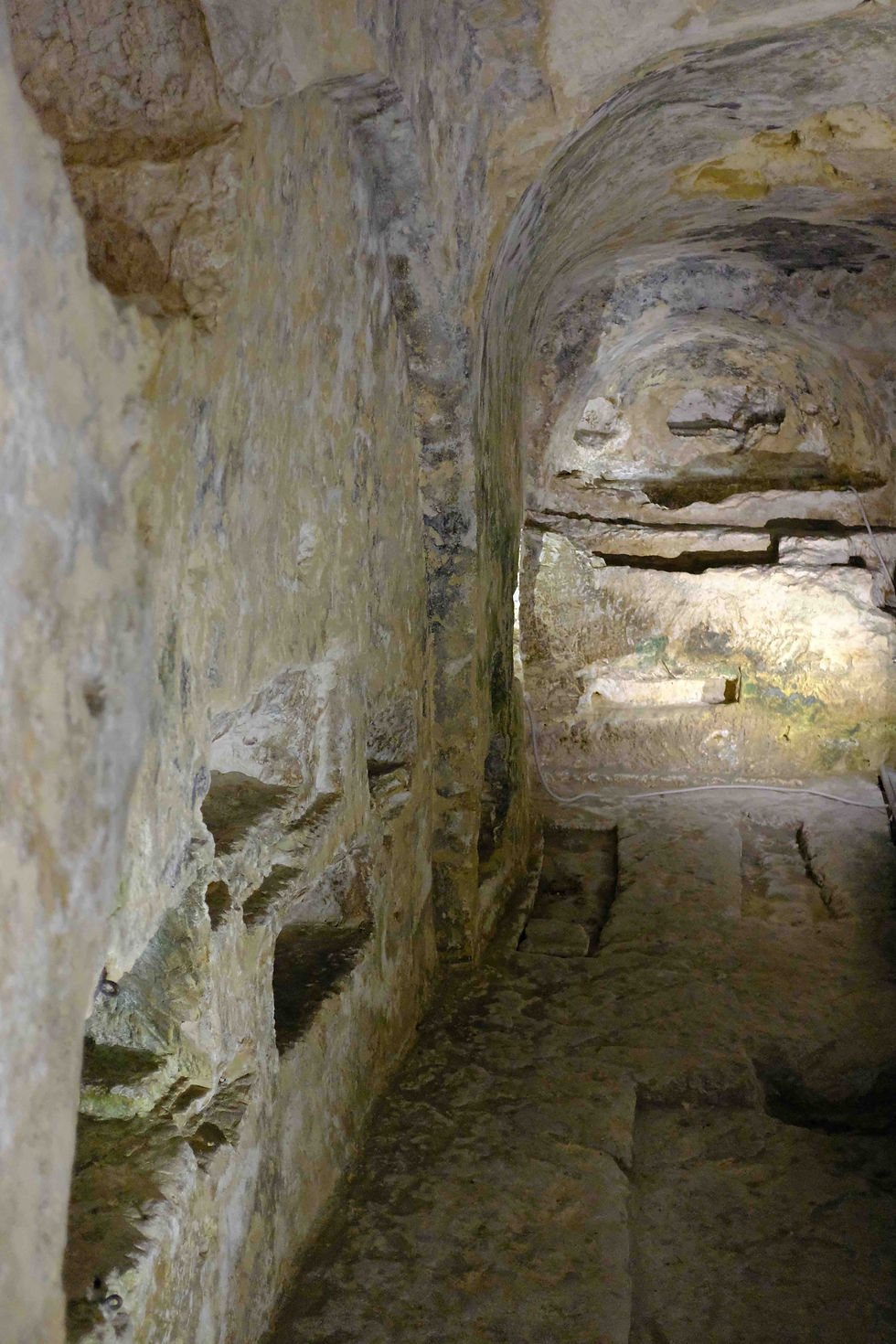Going underground: exploring St. Paul’s Catacombs in Rabat, Malta
- timeless travels

- Feb 1, 2019
- 3 min read
by Neil Hennessy-Vass

Malta, together with the smaller neighbouring island of Gozo, is an historical crossroads having experienced significant occupations by the Greeks, Romans, Moors and Saracens and the Knights Templar. The islands offer a tremendous insight into more recent history too, as they became a strategic harbour during WW2 when many inhabitants fled to shelter in existing excavations, including cellars and crypts. In many ways, the islands offer as much underground as they do above.
In 1844 Dr A.A. Caruana investigated and cleared the site known as St Paul’s Catacombs, which consist of an interconnected, underground network of Roman cemeteries that were also reused by the Christian community until the 7th century or perhaps the 8th century CE. It is the earliest and significantly the largest evidence of Christianity on the island of Malta.

The site is made up of two large zones known as St Paul’s and Saints Paul/Agatha. Containing over 30 hypogea (Roman vaults), the majority are sited in the St Paul’s cluster where the interconnecting tombs and passages span an area of over 2000 sq metres. The site derived its name from a myth: it was once thought to be connected with St Paul’s Grotto. The origins of the main catacomb most likely started from a group of small Punico-Roman tombs and hypogea that over time became enlarged and joined up to form the haphazard configuration. Much smaller than the catacombs of Rome, these catacombs are nonetheless a good example of Maltese underground indigenous architecture, which remained unaltered over centuries.
The catacombs are located on the edge of Mdina (known as Melite in Roman times), as the Romans forbade the burial of bodies inside the city walls. The site is 10km west of Valletta, the capital. As you enter the main building some of the artefacts from previous digs are displayed, including statues, skeletons and urns. A large section of the floor has glass panels allowing clear sight of the catacombs below, which are well lit and look dramatic. During excavations unguentaria (small glass bottles) were found. They are thought to have held unguents and oils thrown onto a funeral pyre to mask the smell of burning flesh. Some scholars say the bottles held the tears of the mourner and hence the name lacrymaria.

The Romans occupied Malta from 300 CE onwards, but pagans, Romans, Christians and Jews also used the site. Underground it is cramped and humid so you need to wear shoes and bring a torch to see into the darker corners. The entrance to the main complex of St Paul’s Catacombs leads to two large halls, adorned with pillars, Doric in appearance. These would have been plastered and painted. There are two circular tables carved from rock with sloping sides, and a hewn bench, believed to be a triclinium, which were often present in Roman houses and used for seating. In all cases found in this area, both table and seating are made from one piece of rock to form a single architectural unit that sits within an apse. Although other uses are possible, it is widely thought that these triclinia or agape (Roman feasting) tables were used for commemorative meals during the annual festival of the dead when the rites of burial were renewed. It is quite rare to find an intact agape, as the Catholic Church destroyed most of them.
There are incised crosses and family arcosolium (an arched recess for sarcophagus) with painted inscriptions and portraits - an artist would have been employed to depict the deceased and their place in society. One stone (200-400 CE) is carved with surgeon’s instruments, including forceps.

It is believed that the tombs fell into disuse and became abandoned during the Saracenic period, as customs and traditions of burial altered drastically. There was a short-lived revival in the 13th century by the Christians, who reused them and re-cut spaces for use as a shrine that was decorated with murals. They were eventually abandoned and fell into disrepair with the main entrance being blocked off but with some limited access via a separate hypogeum in Catacomb Alley.
This is an excellent site with fairly free access. On my early morning visit there were few people around. I would allow about two hours to explore the site, especially if you have a guide, which I would highly recommend as they can add so much more to the readings and engravings on show.
Malta is only a few hours' flight from the UK and offers so much in terms of history and sites to explore. The islands are small and it’s easy to get around. English is widely spoken, the food and wine are excellent, and so if you fancy a couple of weeks of exploration in the sun, then Malta’s your place.




Comments